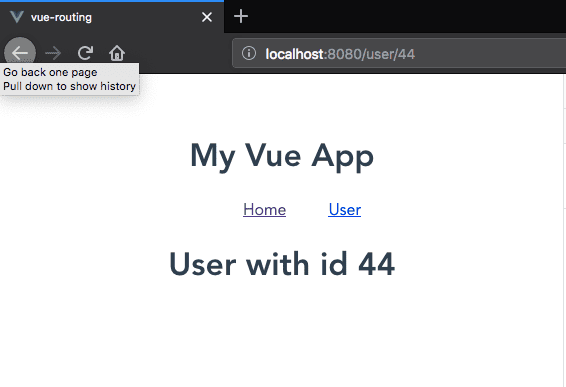Vue Router Dynamic route matching tutorial
In this tutorial, we are going to learn about how to implement dynamic routing in vue router.
In vue router, we are rendering the components based on the path matching but sometimes if we have
10 users where we need to show the data of each user based on their id in such cases we need to use the dynamic segment in the path.
Dynamic segment is added by using colon
:nameofthesegment
import Vue from 'vue'
import App from './App.vue';
import VueRouter from "vue-router";
import Home from './components/Home.vue';
import User from './components/User.vue';
Vue.use(VueRouter);
const router = new VueRouter({
mode: "history",
routes: [
{ path: '/', component: Home },
// dynamic segement `:id` is added to the path { path: '/user/:id', component: User }, ]
})
Vue.config.productionTip = false
new Vue({
router,
render: h => h(App),
}).$mount('#app')Now inside our User component, we can access the dynamic segment with this.$route.params.
<template>
<div class="hello">
<h1>User with id {{userId}}</h1> </div>
</template>
<script>
export default {
data: function() {
return {
//id is name of the dynamic segment we created in router
userId: this.$route.params.id };
}
};
</script>Now we can use the dynamic paths user/1 or user/2.
Accessing Dynamic segement with props
We can also access the dynamic segment inside our component by using props.
To use props first we need to enable the props in our dynamic path.
import Vue from 'vue'
import App from './App.vue';
import VueRouter from "vue-router";
import Home from './components/Home.vue';
import User from './components/User.vue';
Vue.use(VueRouter);
const router = new VueRouter({
mode: "history",
routes: [
{ path: '/', component: Home },
//props are enabled { path: '/user/:id', component: User, props: true }, ]
})
Vue.config.productionTip = false
new Vue({
router,
render: h => h(App),
}).$mount('#app')Now,in our User component we need to declare an id prop.
<template>
<div class="hello">
<h1>User with id {{id}}</h1> </div>
</template>
<script>
export default {
props: ["id"]};
</script>



